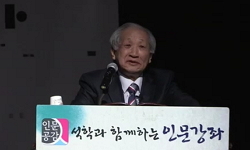본고는 한국 고대 동남해의 해양사에 관한 연구 동향을 살펴보았다. 동남해의 해양교류는 대왜·대일본 교류가 중심이었는데, 이를 삼한시대 삼국시대 통일신라시대로 시기 구분하였다. 삼�...
http://chineseinput.net/에서 pinyin(병음)방식으로 중국어를 변환할 수 있습니다.
변환된 중국어를 복사하여 사용하시면 됩니다.
- 中文 을 입력하시려면 zhongwen을 입력하시고 space를누르시면됩니다.
- 北京 을 입력하시려면 beijing을 입력하시고 space를 누르시면 됩니다.

한국 고대 동남해양사의 연구 동향과 그 과제 = The Research Trends of southeast Maritime in the ancient Korean History and Its Perspective.
한글로보기https://www.riss.kr/link?id=A102393417
- 저자
- 발행기관
- 학술지명
- 권호사항
-
발행연도
2016
-
작성언어
Korean
-
주제어
가야 ; 왜 ; 철교역 ; 신라 ; 군사 대립 ; 송사외교 ; 1차 사료 ; 교류의 실상 ; Gaya ; Wa ; iron trade ; Silla ; military confrontation ; diplomatic relationship by the envoy ; primary records ; reality of bilateral exchanges
-
등재정보
KCI등재
-
자료형태
학술저널
-
수록면
189-219(31쪽)
- DOI식별코드
- 제공처
- 소장기관
-
0
상세조회 -
0
다운로드
부가정보
국문 초록 (Abstract)
본고는 한국 고대 동남해의 해양사에 관한 연구 동향을 살펴보았다. 동남해의 해양교류는 대왜·대일본 교류가 중심이었는데, 이를 삼한시대 삼국시대 통일신라시대로 시기 구분하였다. 삼한 초기에 소규모의 물류가 이루어졌을 때에는 육로를 통해 낙동강하구에 이르러 해로로 일본열도로 갔다. 철을 매개로 한 교역이 점차 발달하면서 대량의 물류가 필요로 하게 되어 선박을 이용한 해로가 주류를 이루게 되었다. 그 교통로는 낙랑군·대방군-서해·남해연안-구야국-쓰시마-이키-북부 구주의 해로가 이용되었다. 이전 시대와 달리 삼국시대의 해양교류는 가야와 왜의 교류는 경제적인 물류가 주류였다. 처음에는 가야와 왜의 철교역에 대한 연구로 시작되었으나, 유물상의 철의 원산지를 규명하게 되면서 철기생산과 교섭체계에 대한 연구로 천착되어 가고 있는 추세이다. 6세기 중엽 신라가 가야를 병합할 때까지 신라와 왜의 교류에 대한 연구는 주로 정치적·외교적 관계에 치중되어 있다. 7세기에 접어들면서 외교적인 목적을 두고 송사외교가 이루어지면서 양국의 교류가 친선관계로 전환되었다. 통일신라시대에 이르러 양국의 교류는 정치적·경제적·문화적 교류로 다양해졌다. 일본의 조선술 발전이 신라의 조선술 전파에 의해 이루어졌다는 연구에 대해 최근에 일본 해안지역에서 표착된 발해선도 일본측의 수리과정에서 선진적인 조선술을 습득하였을 가능성도 있다. 마지막으로 양국의 정사기록의 소략성이나 신라 敵視觀·蕃國觀에 의한 왜곡 문제는 첩포기류와 목간 등의 관련 1차 사료가 발굴 수집되면서 양국의 교류에 대한 왜곡된 교류상을 밝혀내는 데에도 유용한 자료로 활용될 전망이다.
다국어 초록 (Multilingual Abstract)
This paper organized the research trends of southeast maritime in the ancient Korean history. Its Maritime exchanges were the exchanges with Japan, its times divided Samhan period, the Three Kingdoms Period and the Unified Silla Period. Material is di...
This paper organized the research trends of southeast maritime in the ancient Korean history. Its Maritime exchanges were the exchanges with Japan, its times divided Samhan period, the Three Kingdoms Period and the Unified Silla Period. Material is distributed by land in the early Samhan. Its trade was gradually evolved over the iron parameters and became mainstream sea, because large amounts of logistics required the ship. The road was Lelang·Daifang - western and southern coast - Guyakuk - Tsushima - northern Kyushu. It was mainstream economic exchange between Gaya and Japan`. Maritime exchange between Gaya and Japan was the mainstream of economic objective. Now the current studies is the production of iron ore, is inquisitive as study on its production and the bargaining system in the future. Unlike Gaya, studies on the exchanges between Silla and Japan was heavily centered on the political and diplomatic relations by 6th century. Their exchange was converted to amicable relations from the hostile relations in the 7th century. Silla and Japan variously been deployed by political, economic and cultural exchanges in the Unified Silla Period. It was the conventional wisdom that the development of Japan`s shipbuilding evolved by Silla`s. Recent researches found that Japan might be taught advanced shipbuildings in Balhae`s shipwrecks of the repair process. Finally, the summary of the historical records in Silla and distortion of history by the Japanese emperor such as the savage country view and the hostile view toward Shilla can be overcome, the relevant primary data is collected and organised such as Baisiragimotuge(買新羅物解) and Tyouhuki(貼布記), and forecast the reality of bilateral exchanges.
동일학술지(권/호) 다른 논문
-
- 東亞大學校附設 石堂傳統文化硏究院
- 박인희 ( Park In-hee )
- 2016
- KCI등재
-
- 東亞大學校附設 石堂傳統文化硏究院
- 전성욱 ( Jeon Seong-wook )
- 2016
- KCI등재
-
- 東亞大學校附設 石堂傳統文化硏究院
- 김민정 ( Kim Min-jyung )
- 2016
- KCI등재
-
- 東亞大學校附設 石堂傳統文化硏究院
- 허정 ( Heo Jung )
- 2016
- KCI등재





 KCI
KCI KISS
KISS







